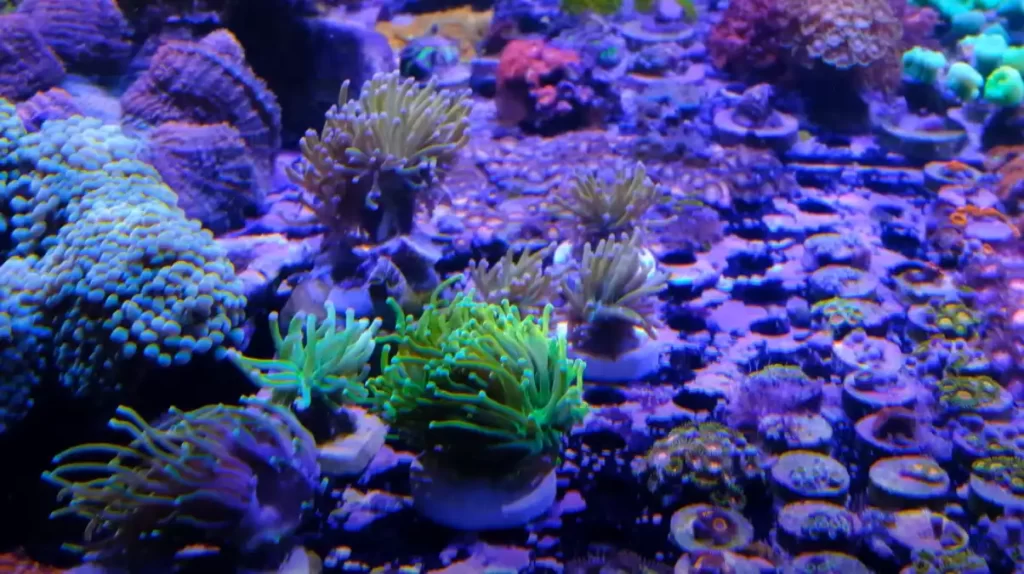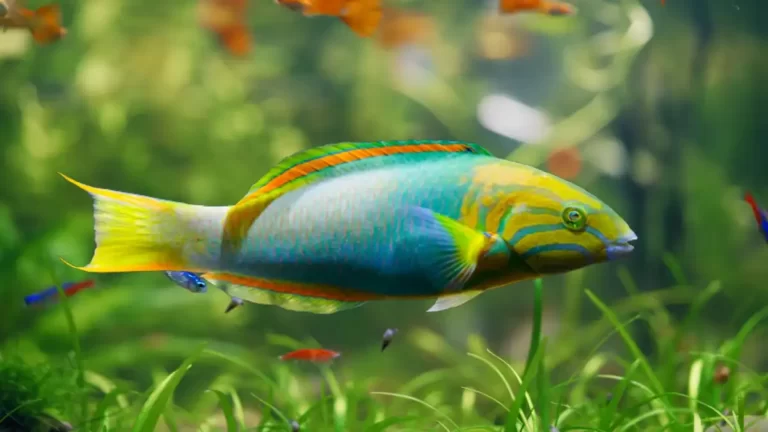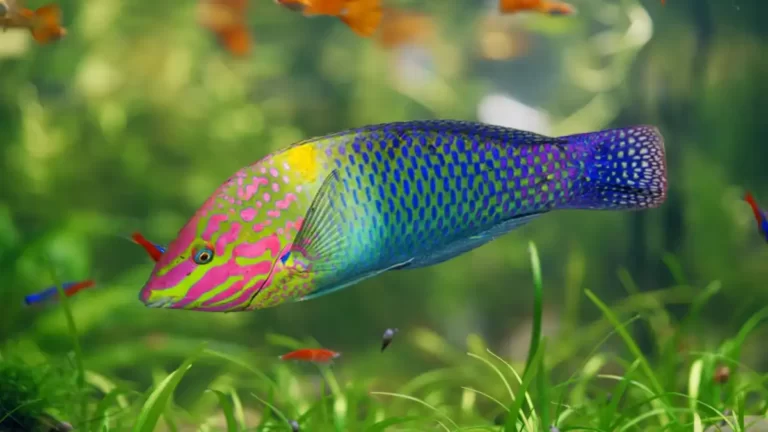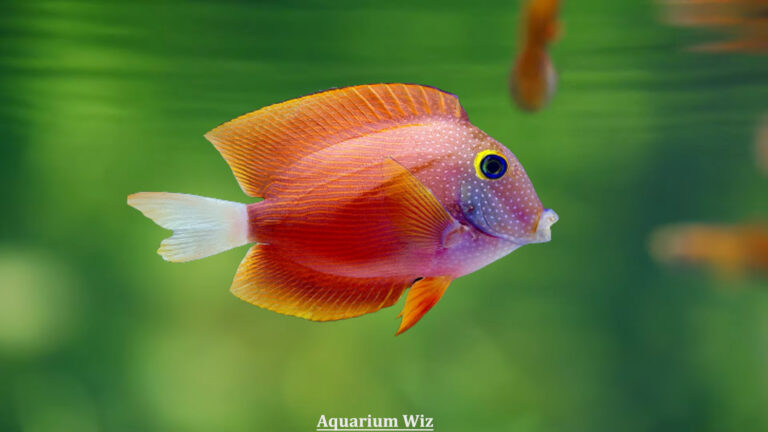Tiger Torch Coral: Care Guide and Maintenance Tips
The Tiger Torch Coral article is your essential resource for understanding how to properly care for and nurture this unique coral variety. We’ll provide you with practical insights and tips on creating the right conditions in your aquarium for the Tiger Torch Coral to thrive.
From water requirements to lighting considerations, feeding recommendations, and ongoing upkeep, we’ll cover all the crucial aspects of maintaining this captivating coral species.
Join us as we delve into the world of Tiger Torch Coral care, equipping you with the knowledge you need to ensure the health and vibrancy of these remarkable corals in your aquatic sanctuary.

Tiger Torch Coral Overview
Species Classification
The Tiger Torch Coral, or Euphyllia glabrescens, is a species of large polyp stony coral (LPS) that belongs to the family Euphyllidae. It is also commonly known as the Torch Coral, Hammer Coral, or Anchor Coral. The Tiger Torch Coral is named for its striking tiger-like stripes that run along its tentacles.
Habitat
The Tiger Torch Coral is native to the Indo-Pacific region, including the Red Sea, the Great Barrier Reef, and the waters around Japan. It can be found in shallow waters, usually at depths of less than 30 meters, and prefers moderate to high light and moderate water flow. The Tiger Torch Coral is a hardy species that can adapt to a range of water conditions, but it is sensitive to changes in water quality, temperature, and lighting.
The Tiger Torch Coral is a popular choice for reef aquariums due to its striking appearance and ease of care. It can be kept in a variety of aquarium sizes, but it requires adequate space to grow and extend its tentacles. The Tiger Torch Coral is a photosynthetic species that derives much of its nutrition from the symbiotic algae (zooxanthellae) that live within its tissues. However, it can also benefit from supplemental feeding of small meaty foods, such as brine shrimp or mysis shrimp.

Physical Description
Tiger torch coral, also known as Euphyllia glabrescens “tiger torch,” is a type of large polyp stony (LPS) coral that is highly sought after by reef aquarium enthusiasts. It is a beautiful and unique coral that can add a striking visual element to any aquarium.
Color Patterns
The tiger torch coral has a distinctive color pattern that sets it apart from other types of Euphyllia corals. The base color of the coral is usually a golden or yellowish-brown color, with bright green or teal tips on the tentacles. The tentacles themselves can be quite long, up to several inches in length, and they have a distinctive striped pattern that gives the coral its name. The stripes are usually black or dark brown, and they run along the length of the tentacles.
Size and Shape
Tiger torch coral can grow to be quite large, with colonies reaching up to several feet in diameter. The individual polyps, however, are relatively small, typically only a few inches in diameter. The shape of the coral can vary depending on the conditions in which it is grown. In ideal conditions, the coral will grow in a branching, tree-like structure, with multiple branches extending from a central stalk. In less ideal conditions, the coral may grow more irregularly, with fewer branches and a less symmetrical shape.
Overall, the tiger torch coral is a beautiful and unique addition to any reef aquarium. Its distinctive color pattern and large size make it a popular choice for hobbyists looking to add a striking visual element to their tanks. However, it is important to note that the coral can be quite aggressive, and it may require careful placement and management to prevent it from stinging or damaging other corals in the tank.
Life Cycle
Growth
Tiger Torch Coral, like other Euphyllia species, is a large polyp stony (LPS) coral that grows relatively quickly in the right conditions. The growth rate of the coral largely depends on the light, water flow, and nutrient levels in the aquarium. With good care, the coral can grow up to 7 inches in length and 5 inches in width.
The coral’s growth is characterized by the development of new branches from the parent coral. These branches grow out from the parent coral’s base and develop into new coral heads. Over time, the new branches will develop their own polyps and become independent coral colonies.
Reproduction
Tiger Torch Coral can reproduce asexually and sexually. Asexual reproduction occurs when the coral produces new branches that grow into independent colonies. Sexual reproduction, on the other hand, occurs when the coral releases eggs and sperm into the water column.
In the wild, Tiger Torch Coral spawns during the summer months, typically around the full moon. The coral releases its eggs and sperm into the water column, where they mix and fertilize. The fertilized eggs develop into free-swimming larvae, which eventually settle on the reef and grow into new coral colonies.
In captivity, Tiger Torch Coral can also reproduce sexually. However, it is important to note that sexual reproduction requires very specific conditions, including the presence of both male and female corals, as well as the right water temperature, salinity, and nutrient levels. As a result, sexual reproduction in captivity is relatively rare.
Ecological Role
Tiger Torch Coral, scientifically known as Euphyllia glabrescens, plays a significant ecological role in the coral reef ecosystem. This section will discuss the ecological role of tiger torch coral in terms of predators and prey and its impact on the coral reef ecosystem.
Predators and Prey
Tiger Torch Coral is preyed upon by a variety of marine predators, including some species of fish, snails, and crabs. The coral’s tentacles contain stinging cells called nematocysts, which are used to capture small planktonic organisms. The nematocysts can also be used to deter predators by stinging them, causing pain and discomfort.
On the other hand, tiger torch coral also serves as a shelter and a source of food for some marine organisms. The coral’s branching structure provides a habitat for small fish, shrimp, and crabs. Additionally, the coral’s polyps produce mucus, which attracts planktonic organisms that serve as a food source for other marine organisms.
Coral Reef Ecosystem
Tiger Torch Coral contributes to the overall health and biodiversity of the coral reef ecosystem. Coral reefs are one of the most diverse ecosystems on the planet, providing a habitat for a wide variety of marine organisms. They also provide numerous ecosystem services, including shoreline protection, carbon sequestration, and tourism.
Tiger Torch Coral plays a crucial role in maintaining the ecological balance of the coral reef ecosystem. As a photosynthetic organism, it contributes to the production of oxygen and the removal of carbon dioxide from the water. Additionally, the coral’s calcium carbonate skeleton helps to build and maintain the physical structure of the reef.
In conclusion, tiger torch coral plays a significant ecological role in the coral reef ecosystem as both prey and predator. It also contributes to the overall health and biodiversity of the ecosystem. Understanding the ecological role of tiger torch coral is important for the conservation and management of coral reefs.
Conservation Status
Threats
Tiger torch coral, scientifically known as Euphyllia glabrescens, is currently listed as a species of “Least Concern” by the International Union for Conservation of Nature (IUCN). However, like many other coral species, tiger torch coral faces a number of threats that could impact its population in the future.
One of the main threats to tiger torch coral is habitat destruction. Coastal development and pollution can lead to the degradation of coral reefs, which can make it difficult for coral species to survive. Additionally, overfishing can disrupt the balance of reef ecosystems, which can lead to further coral decline.
Another threat to tiger torch coral is climate change. Rising sea temperatures and ocean acidification can cause coral bleaching, which occurs when coral expel their symbiotic algae and turn white. Coral bleaching can be fatal if the coral is not able to recover quickly enough.
Conservation Efforts
To help protect tiger torch coral and other coral species, a number of conservation efforts are underway. One approach is to establish marine protected areas (MPAs), which are designated areas where fishing and other activities are restricted. MPAs can help protect coral reefs and other marine habitats from damage and degradation.
Another approach is to promote sustainable fishing practices. By reducing overfishing and protecting important fish species, reef ecosystems can remain in balance, which can help support healthy coral populations.
Finally, reducing greenhouse gas emissions can help mitigate the effects of climate change on coral reefs. By transitioning to cleaner energy sources and reducing carbon emissions, we can help slow the rate of warming and ocean acidification, which can help protect coral species like tiger torch coral.
Related Post: Red Coralline Algae Care: Characteristics and Habitat
Caring for Tiger Torch Coral

Aquarium Requirements
Tiger Torch Coral is a beautiful and exotic species of coral that requires specific aquarium conditions to thrive. Here are some of the key requirements for keeping Tiger Torch Coral in your aquarium:
- Lighting: Tiger Torch Coral requires moderate to high lighting conditions. It is recommended to use LED lighting with a color temperature of 10,000K to 20,000K.
- Water Flow: Tiger Torch Coral requires moderate water flow. It is recommended to place the coral in a low to middle region of the aquarium where it can receive moderate water flow.
- Placement: Tiger Torch Coral should be placed in a location where it can receive moderate lighting and water flow. It is recommended to place the coral in the lower to middle region of the aquarium.
- Water Parameters: Tiger Torch Coral requires stable water parameters. The recommended temperature range is 75°F to 80°F, pH range is 8.1 to 8.4, and salinity range is 1.023 to 1.025.
Feeding and Maintenance
Tiger Torch Coral is a photosynthetic coral that relies on zooxanthellae for its nutrition. However, it also requires supplemental feeding to maintain its health and vibrant coloration. Here are some tips for feeding and maintaining Tiger Torch Coral:
- Feeding: Tiger Torch Coral can be fed with small pieces of meaty foods such as brine shrimp, mysis shrimp, and krill. It is recommended to feed the coral once or twice a week.
- Maintenance: Tiger Torch Coral requires regular maintenance to keep it healthy. It is recommended to perform regular water changes, test the water parameters, and monitor the lighting and water flow conditions.
Overall, Tiger Torch Coral is a beautiful and exotic species of coral that requires specific aquarium conditions to thrive. By providing the right lighting, water flow, and feeding, you can keep your Tiger Torch Coral healthy and vibrant for years to come.
Related Post: Rainbow Chalice Coral Care, Tank Setup and Diseases
Frequently Asked Questions [FAQs]
How Can I Prevent Coral Bleaching?
Coral bleaching can occur due to high light intensity. To prevent this, acclimate the coral gradually to higher light levels. Avoid placing it in direct light for extended periods and ensure your lighting schedule follows natural day-night cycles.
What Maintenance Does Tiger Torch Coral Require?
Regular maintenance includes performing water changes of 10-20% every 1-2 weeks to maintain water quality. Monitor water parameters, control algae growth, and inspect the coral for signs of distress, such as color changes or receding tissue.
Related Posts:





